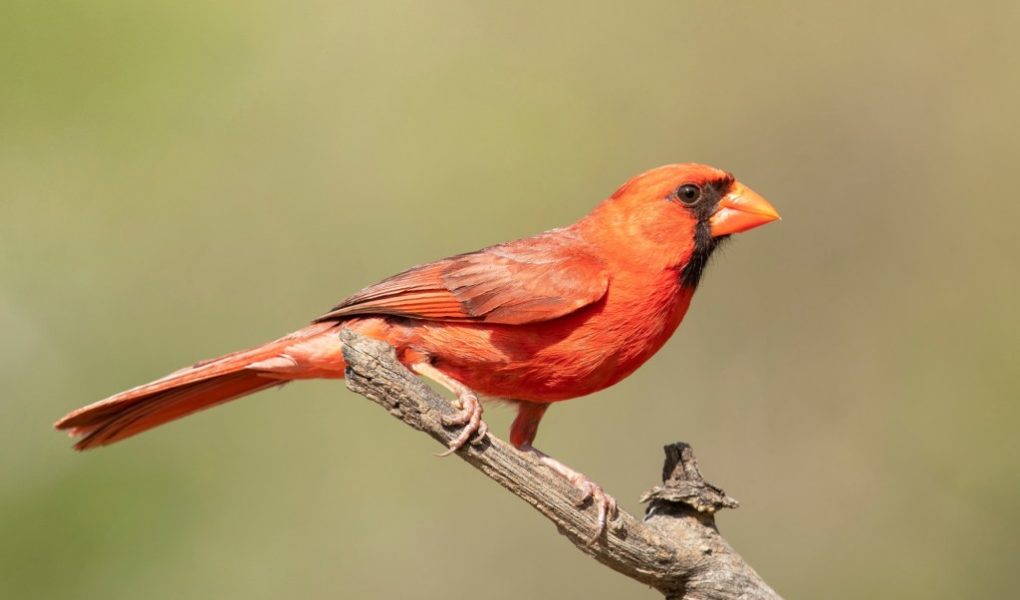I’ve been spending the last week or so out East. While I’ve been visiting my wife’s family in Pennsylvania, I’ve naturally taken a little time out to look at the local birds. How does the birdlife in the East compare to the birds back at home in California?

I’ll start with some concessions to the locals: cardinals are nice, those shockingly red and crested birds that don’t come any closer than Arizona. I’ve also been amused by the abundant presence of catbirds, dark gray mockingbird relatives with a distinctive whining call. Finally, the East is admittedly richer in warblers than California. Although I’ve been visiting outside of the real warbler migration seasons, perhaps my favorite of the songbirds I’ve seen on my trip is the lovely black-and-white warbler.
When it comes to many of the common neighborhood songbirds, Californians might find the East similar but different. The East has chickadees, titmice, hummingbirds, jays and woodpeckers, but slightly different species than we have at home. The black-capped chickadees are a little plainer than Marin’s chestnut-backed chickadees — my Californian eyes tend to spot these eastern chickadees and unconsciously start wondering why they are so dull and desaturated, lacking the rich chestnut-brown backs of their Pacific coast cousins.
The tufted titmice of the East are arguably more colorful than our Californian oak titmice, with black forehead patches and generally more contrast than our birds of maximum plain grayness, but they lack many of the specifics I love most about my home birds. Their voices are not as consistently scratchy with the exact vein of raspiness I know so well, they don’t have the iconic bond with the oaks that I treasure, and they are not equal to our oak titmice in the continuity of their monogamous pair bonds.
Other birds have a parallel story: superficially similar in appearance or name, but lacking the specific little details that I treasure. Sometimes the gap is obviously in California’s favor, such as how our Anna’s hummingbirds stay with us all year round, while the eastern ruby-throated hummingbirds will soon head south for the winter.
Sometimes the gap is more subtle, such as the subtle demonstrations of memory and intelligence that our California scrub-jays have shown, beyond the specifically known capacity of the eastern blue jays.
Sometimes the gap is not exactly a measurable “gap” at all, just an idiosyncratic and subjective impression of unique appeal. These eastern red-bellied woodpeckers are fine, but I don’t know that there is any woodpecker for which I would trade our fabulously quirky acorn-hoarding clowns, the acorn woodpeckers.
And finally, there are many distinctive birds of home for which there are no perfect eastern parallels. The neighborhoods and trails that I have visited have nothing like a California quail, our comically beautiful state birds. There is no bird that combines endearingly mundane plainness with endearingly romantic pair bonds into the neighborly charm of the California towhee. And they have no bushtits!
The point of all this comparison is not to simplistically declare our California birds superior to those of the East (although they are). The lesson that I always seem to come away with from such brief visits with foreign birds is that knowledge and long acquaintance are essential to the pleasure I take in birds. Brief glimpses of unfamiliar species can be novel and exciting, but the richness of those encounters pales in comparison to the unhurried company of long familiar birds.
The birds whose appearance I appreciate most are not the most extravagant, but the ones whom I know best. The bird sounds I enjoy most are those that I can instantly attach to an old, familiar friend. Knowing the stories of our birds and how they lead their lives turns them from anonymous passing strangers into rich and vivid characters.
The more I see chestnut-backed chickadees, the more I appreciate the rich brown that they wear, unlike the black-capped chickadees of the East. When I hear an oak titmouse, I relish the exact timbre of their rasping voice, their signature in sound. And when I see our plain brown towhee, hopping down the street, I smile at those old companions, who live here and nowhere else.
Jack Gedney’s On the Wing runs every other Monday. He is a co-owner of Wild Birds Unlimited in Novato and author of “The Private Lives of Public Birds.” You can reach him at jack@natureinnovato.com.
𝗖𝗿𝗲𝗱𝗶𝘁𝘀, 𝗖𝗼𝗽𝘆𝗿𝗶𝗴𝗵𝘁 & 𝗖𝗼𝘂𝗿𝘁𝗲𝘀𝘆: www.mercurynews.com
𝗙𝗼𝗿 𝗮𝗻𝘆 𝗰𝗼𝗺𝗽𝗹𝗮𝗶𝗻𝘁𝘀 𝗿𝗲𝗴𝗮𝗿𝗱𝗶𝗻𝗴 𝗗𝗠𝗖𝗔,
𝗣𝗹𝗲𝗮𝘀𝗲 𝘀𝗲𝗻𝗱 𝘂𝘀 𝗮𝗻 𝗲𝗺𝗮𝗶𝗹 𝗮𝘁 dmca@enspirers.com




